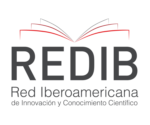The fatal conceit of regulating artificial intelligence
DOI:
https://doi.org/10.30800/mises.2025.v13.1613Keywords:
Artificial Intelligence, Regulation, Fatal Conceit, Spontaneous OrderAbstract
Daron Acemoglu’s essay Harms of AI advocates broad state regulation of artificial intelligence (AI) to mitigate social and economic risks. This article presents a systematic critique of this approach, grounded in Friedrich Hayek’s theory of spontaneous order, Milton Friedman’s principle of economic scarcity, and Leonard Read’s metaphor of decentralized cooperation. It argues that attempting to centrally regulate such a complex phenomenon as AI falls into the “fatal conceit” of disregarding the dynamics of dispersed knowledge and spontaneous coordination among market agents. Through analysis of AI’s global production chain and
its multiple interdependent components, we demonstrate that free markets and competition constitute more effective instruments for risk mitigation than centralized regulations, which tend to inhibit innovation and create economic distortions.
Downloads
References
Acemoglu, D. (2021). Harms of AI (Working Paper No. 29247). National Bureau of Economic Research. https://www.nber.org/papers/w29247 DOI: https://doi.org/10.3386/w29247
Beer, D. (2017). The social power of algorithms. Information, Communication & Society, 20(1), 1-13. https://doi.org/10.1080/1369118X.2016.1216147 DOI: https://doi.org/10.1080/1369118X.2016.1216147
Buchanan, J. M., & Tullock, G. (1962). The calculus of consent: Logical foundations of constitutional democracy. University of Michigan Press.
Campos, R. (1986). Lanterna na popa. Topbooks.
Dean, J. (2023). Scaling AI: The infrastructure behind large models. Google AI Blog. https://ai.googleblog.com/2023/04/scaling-ai-infrastructure-behind-large.html
Friedman, M. (1984). Livre para escolher. Record.
Hayek, F. A. (1988). A arrogância fatal: Os erros do socialismo. Instituto Liberal.
Humphreys, D. (2019). The remaking of the mining industry. Palgrave Macmillan.
Lee, J. (2020). Semiconductors and the U.S.-China innovation race. Hudson Institute. https://www.hudson.org/technology/semiconductors-and-the-u-s-china-innovation-race
OECD. Organization for Economic Co-operation and Development. (2022). Trade in raw materials: A summary report. OECD Publishing. https://www.oecd.org/trade/topics/trade-in-raw-materials/
Read, L. E. (1958). Eu, o lápis. Foundation for Economic Education.
Schneider, E. (2022). Global supply chains for critical minerals. Brookings Institution. https://www.brookings.edu/articles/global-supply-chains-for-critical-minerals/
Published
How to Cite
Issue
Section
License
Copyright (c) 2025 MISES: Interdisciplinary Journal of Philosophy, Law and Economics

This work is licensed under a Creative Commons Attribution 4.0 International License.

This Journal is licensed under a Creative Commons Attribution 4.0 International License.


















